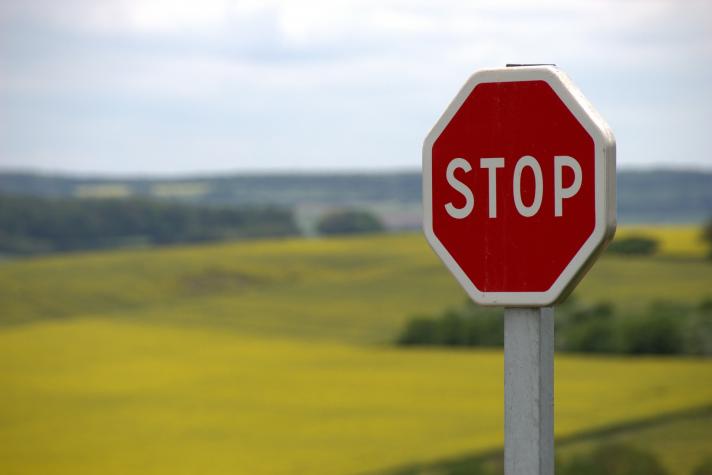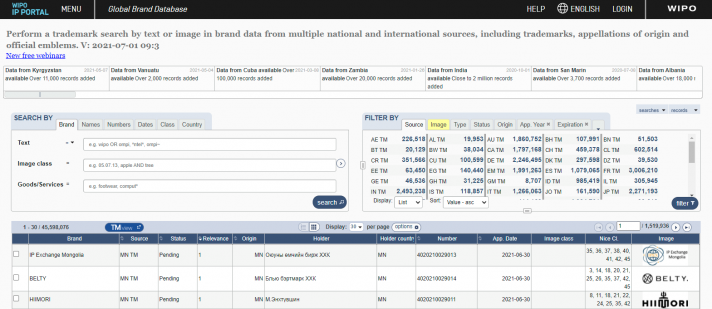Trade marks (brands) represent one of the principal assets of a company. Trade mark is crucial to your success because it allows clients and consumers to easily identify and find products and services. Protection comes with a price, and startups and SMEs often have limited budgets. However, in the digital economy, trade mark protection is well worth the investment. It secures legal certainty and prevents others from illegally copying or using your mark to take advantage of your reputation. Strong trade mark protection enables you to stay competitive and nurture a safe environment for thriving cross-border expansion.
(Photo source: https://pixabay.com/)
Trade mark searches are an integral part of any trade mark protection strategy, but many companies do not routinely perform them or do not do so thoroughly enough. In this article we will provide you with a full rundown of the importance of trade mark searches and how to effectively conduct them.
1. Why are trade mark searches needed?
A pre-filing trade mark search
By finding out what other trade marks are out there, you will learn whether there is room for the trade mark you want to protect. A pre-filing trade mark search allows you see if there are any pre-registered/pre-filed trade marks that are identical or significantly similar to yours (which may lead to their registration being refused). If the search results reveal the existence of trade marks that are likely to block your trade mark registration, at least you have a hint before taking further steps, for example by changing the proposed trade mark or removing prior trade marks if feasible (this may be achieved via amicable negotiations or by cancellation actions, which are usually attempted with the support of a trade mark expert). As a result, these searches will help businesses to avoid wasting significant time and resources preparing and filing an application for a trade mark that may not be available for registration.
Watch out for potential infringements
Owning a registered trade mark does not automatically guarantee that someone else do not use it, or register a similar trade mark. Regular trade mark monitoring is highly recommended, as it can result in the early detection of potential infringements such as counterfeits, copycats, bad faith registrations, etc.
In practice, copycats usually operate in the same industry as the trade mark holder; by using your marks they can easily mislead consumers about the quality and origin of their products and services. Consequences can include damaging your reputation, decreasing your revenue and preventing your expansion plans. The early detection of infringement allows you to quickly initiate a proper solution to stop or mitigate the violations and to notify your clients in a timely fashion, thereby avoiding brand dilution or misleading messages.
(Photo source: https://pixabay.com/)
Moreover, trade mark protection is territorial: protection exists only in the country where you have registered your trade mark. Developing an efficient brand protection plan for cross-border markets has been seen as a big challenge for many businesses, especially SMEs. In fact, like many other countries, most South-East Asian countries apply the first to file principle for trade mark protection, which gives priority to those who first file an application to register the trade mark. This rule, unfortunately, opens the door for bad-faith registration practices i.e., a third party (a trade mark squatter, local company or any other party) intentionally files a trade mark application in a particular country before the trade mark owner to become a legal owner of the trade mark. By successfully registering your trade mark, they can take advantage of your successful business for commercial gain in your target market – this can have various consequences, from damaging your reputation to excluding you from the market. However, after a trade mark filing, intellectual property (IP) offices will usually publish the trade mark application for public inspection for a specific period of time, to allow third parties to file an opposition (for example, oppositions can be filed in Cambodia within 90 days, in Singapore within 2 months and in the Philippines within 30 days of the publication date). Detecting bad faith registrations promptly allows you to react in a timely fashion.
2. Where to search?
There are many sources that a brand owner can use to run a trade mark search. Some suggestions are detailed below.
a) Trade mark databases
Global Brand Database
The Global Brand Database, administered by the World Intellectual Property Organization (WIPO), automatically uploads trade mark records sent by national, regional and international collections – for example from Madrid – The International Trademark System (details of database content sources here).
Through the Global Brand Database, you can:
- conduct a search to cover multiple sources simultaneously in a large number of countries;
- search by text, class, goods or services, holder names, countries and even images (using AI search-by-image filter functions).
National trade mark databases
Although the Global Brand Database covers a large number of trade mark collections, it depends on how often national offices communicate updated information to the WIPO. Also, some national databases are not available on the Global Brand Database, Myanmar is one example. Therefore, it is also advisable to run simultaneous and additional searches in the database of your target national IP office to get the latest updates on applications that have been filed/registered.
In South-East Asia, Singapore, Vietnam, Indonesia, Malaysia, the Philippines, Brunei, Laos and Cambodia are the countries in which trade mark databases are available in English.
b) The internet, e-commerce platforms and social media networks
A comprehensive trade mark search should not only review trade mark databases, it should also detect unregistered marks that are being used by third parties on the market and may be infringing your trade mark rights. Conducting searches of multiple sources that counterfeiters, copycats and other criminals may be using to take advantage of your marks is always recommended. Searches should be conducted on the internet, e-commerce platforms and prevailing social media networks.
(Photo source: https://www.pexels.com/)
With over 87% of the search market share, Google is a dominant search engine worldwide and its share is even higher in South-East Asia (over 90% for most countries in the region)[1]. Conducting a Google search can take you to numerous websites, links, apps and networks that may contain signs of potential infringement. The Covid-19 crisis is accelerating the already thriving digitalisation process, driving more and more businesses and consumers online. Amid this overwhelming wave of online activity, e-commerce platforms have become vital market places to fulfill people’s needs. In South-East Asian countries, Shopee, Lazada, Tokopedia, Bukalapak, Tiki, etc. are the most-visited e-commerce sites[2] where you can find various types of fake products in different price ranges. Using social media networks such as Facebook, Instagram or TikTok in order to reach out to consumers and sell counterfeits is also quite common in the region.
3. Conclusion
Some popular methods that businesses can use to run trade mark searches have been outlined above. However, consulting a trade mark specialist to obtain better search results and practical advice is usually recommended. Comprehensive trade mark searches should take various factors into account. As well as names, key words and images, translations and national phonetic variations of the search terms should be included. Many South-East Asian countries, such as Thailand, Laos, Cambodia, Indonesia, and Myanmar, have their own alphabets, which do not use Roman characters. Using a local specialist to help with trade mark searches is advisable, as they will maximise the search effectiveness by avoiding any gaps.
Moreover, when the results come in, expertise is required in order to carry out a proper analysis. For example, when considering the likelihood of identical or similar marks being confused with one another, an experienced trade mark specialist will know how to assess the situation by properly reviewing the similarity of the products and services that the marks are being used for. They can provide you with a practical assessment of the likely success of your registration application or if you will be able to take actions against potential infringements.
Trade mark searches are vital for your brand protection strategy, especially in the fast-paced digital economy. Being well informed will save you a huge amount of time and resources, and secure a safe way for your business to grow and thrive.
The SEA IP SME Helpdesk developed and published a Guide to Trade Mark protection in South-East Asia (here) and How to Remove Counterfeit Goods from e-commerce Sites in South-East Asia (here).
For more information about IP in SEA, check out our website at https://intellectual-property-helpdesk.ec.europa.eu/regional-helpdesks/south-east-asia-ip-sme-helpdesk_en.
The SEA IP SME Helpdesk is an EU initiative that provides free, practical IP advice to European SMEs in South-East Asia. EU companies can send questions to question southeastasia-iprhelpdesk [dot] eu (question[at]southeastasia-iprhelpdesk[dot]eu) and will receive a reply within 3 working days.
southeastasia-iprhelpdesk [dot] eu (question[at]southeastasia-iprhelpdesk[dot]eu) and will receive a reply within 3 working days.
[1] https://gs.statcounter.com/search-engine-market-share/desktop/worldwide
[2] https://www.campaignasia.com/article/the-top-10-most-visited-southeast-asia-ecommerce-sites/468523
Details
- Publication date
- 1 July 2021




